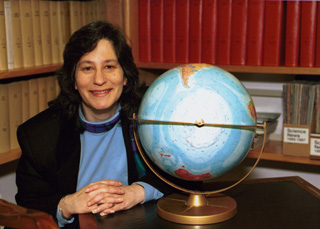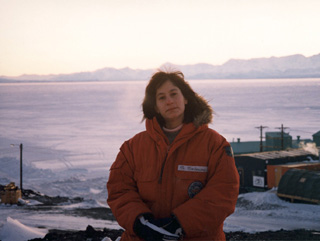

Yale University Press August 2001
Susan Solomon is a recognized world expert in atmospheric science. Since receiving her Ph.D. in chemistry from the University of California at Berkeley in 1981, she has been employed by the National Oceanic and Atmospheric Administration as a research scientist. Her research has provided key measurements and critical theoretical understanding of stratospheric ozone destruction. In 1986 and 1987, she served as the Head Project Scientist of the National Ozone Expedition at McMurdo Station, Antarctica, and made some of the first measurements that pointed toward chlorofluorocarbons as the cause of the ozone hole. In 1994, an Antarctic glacier was named in recognition of her contributions to polar science.

Dr. Solomon is the recipient of many other honors and awards for her insights in explaining the cause of the Antarctic ozone hole, including the James B. Macelwane Award of the American Geophysical Union, the Gold Medal for Exceptional Service of the Department of Commerce, the Henry G. Houghton Award and the Carl-Gustaf Rossby Medal of the American Meteorological Society, for excellence in research, the Arthur S. Flemming Award for exceptional government service, the Commonwealth Award of the Commonwealth Trust, and the Ozone Award of the United Nations Environment Programme. In 1992, R&D Magazine honored her as its scientist of the year. She has received honorary doctoral degrees from Tulane University, Williams College, and the University of Colorado. She is a member of the U.S. National Academy of Sciences and a Foreign Associate of both the French and European Academies of Sciences. In March of 2000, she received the National Medal of Science, the United States' highest scientific distinction, for "key insights in explaining the cause of the Antarctic ozone hole."